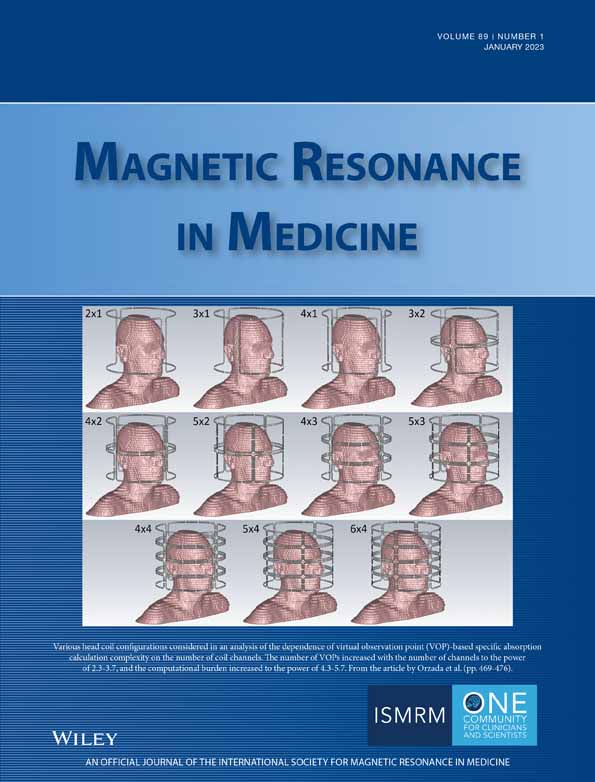Motion resilience of the balanced steady-state free precession geometric solution
Some of the studies in this paper were presented in abstract form at various International Society for Magnetic Resonance in Medicine meetings, including “Correction in Temporal Bone Imaging with GS-bSSFP” in 2014, “On the Resilience of GS-bSSFP to Motion and Other Noise-like Artifacts” in 2015, “Evaluating Motion Artifact Correction of the Linearized Geometric Solution in bSSFP MRI” in 2018, and “The Geometric Solution to Banding Mitigates Motion Artifact in bSSFP Imaging” in 2020.
Funding information: Canon Medical Systems Corporation, Grant/Award Number: AM05; Fred Hutchinson Cancer Research Center, Grant/Award Number: P30 CA015704; GE Healthcare, Grant/Award Number: A-69AM02; Philips Healthcare, Grant/Award Number: UWAS-137MOD01; University of Washington Royalty Research Fund, Grant/Award Number: A105547BN65-1804
Click here for author-reader discussions
Abstract
Purpose
Many MRI sequences are sensitive to motion and its associated artifacts. The linearized geometric solution (LGS), a balanced steady-state free precession (bSSFP) off-resonance signal demodulation technique, is evaluated with respect to motion artifact resilience.
Theory and Methods
The mechanism and extent of LGS motion artifact resilience is examined in simulated, flow phantom, and in vivo clinical imaging. Motion artifact correction capabilities are decoupled from susceptibility artifact correction when feasible to permit controlled analysis of motion artifact correction when comparing the LGS with standard and phase-cycle-averaged (complex sum) bSSFP imaging.
Results
Simulations reveal that the LGS demonstrates motion artifact reduction capabilities similar to standard clinical bSSFP imaging techniques, with slightly greater resilience in high SNR regions and for shorter-duration motion. Flow phantom experiments assert that the LGS reduces shorter-duration motion artifact error by ∼24%–65% relative to the complex sum, whereas reconstructions exhibit similar error reduction for constant motion. In vivo analysis demonstrates that in the internal auditory canal/orbits, the LGS was deemed to have less artifact in 24%/49% and similar artifact in 76%/51% of radiological assessments relative to the complex sum, and the LGS had less artifact in 97%/81% and similar artifact in 3%/16% of assessments relative to standard bSSFP. Only 2 of 63 assessments deemed the LGS inferior to either complex sum or standard bSSFP in terms of artifact reduction.
Conclusion
The LGS provides sufficient bSSFP motion artifact resilience to permit robust elimination of susceptibility artifacts, inspiring its use in a wide variety of applications.
Open Research
DATA AVAILABILITY STATEMENT
MatLab (Mathworks, Inc., Natick, MA) code for the described algorithms have been posted online at https://github.com/mnhoff/GS-bSSFP_MotionStudy (commit# d0f35e2).




